Exploring Brownstone Homes for Sale in NYC
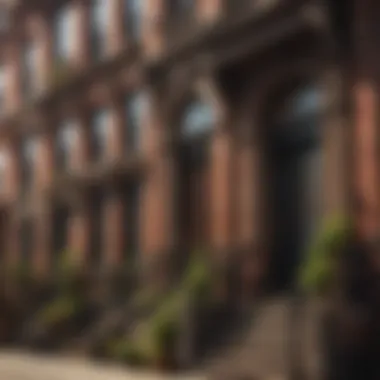
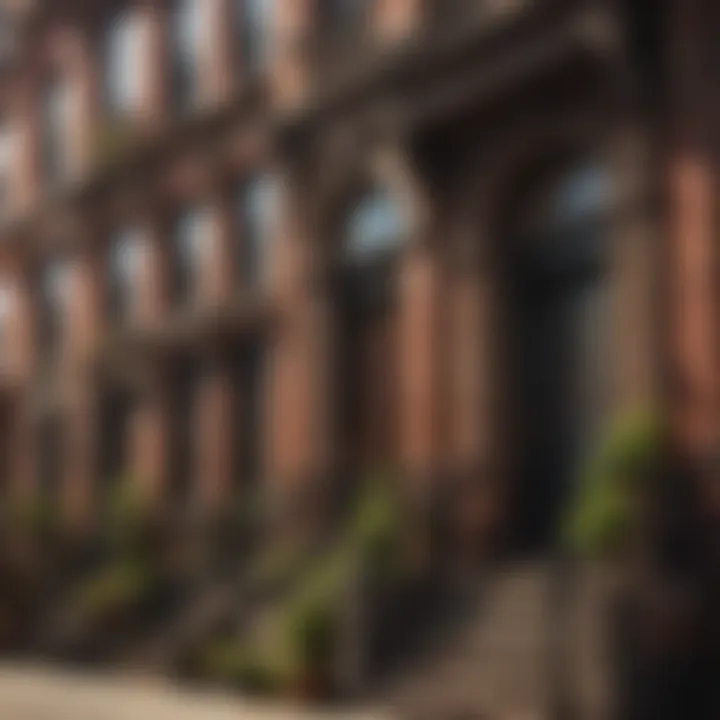
Intro
The charm of brownstone homes in New York City resonates deeply with those who appreciate the local history and architectural beauty. These homes, with their classic facades and intricate details, bring to mind an era when craftsmanship was king. Whether you're a real estate aficionado or someone just looking to understand these gems better, this guide will arm you with valuable insights. You’ll discover not just what makes these homes desirable but also the neighborhoods they occupy and the buying process that awaits prospective owners.
Inspiring Homes
Brownstones offer a unique combination of elegance and warmth. They are cozy yet grand, making them particularly attractive to a range of buyers, from growing families to single professionals embracing city living. The feeling of stepping into a brownstone can be akin to entering a rich tapestry of stories from a bygone era, filled with a sense of community and history.
Architectural Styles
The architectural style of brownstone homes is instantly recognizable. Most feature a façade made from brown sandstone, which is both durable and aesthetically pleasing. This material sets the tone for the home’s overall character—dark, moody, yet inviting. Furthermore, many brownstones include:
- Parlor floors that are expansive, serving as living areas filled with natural light.
- High ceilings that accentuate the sense of space and airiness.
- Original moldings and fireplaces, providing a peek into the craftsmanship of past artisans.
- Private outdoor spaces, like backyards or terraces, often hidden from the bustling streets.
These elements are what make brownstones not just houses, but homes filled with individual charm and potential.
Stunning Locations
Brownstone homes are not just about the property; location adds a whole other layer to their allure. In New York City, they inhabit neighborhoods rich in character and life.
Neighborhood Highlights
- Brooklyn Heights: Often topping the charts for its picturesque views of Manhattan, the tree-lined streets of Brooklyn Heights are home to some of the most beautifully preserved brownstones.
- Park Slope: Known for its vibrant community and family-friendly atmosphere, Park Slope offers a mix of quaint shops and access to green spaces like Prospect Park.
- Harlem: Historically significant, Harlem showcases exquisite brownstones that are woven deeply into the cultural fabric of the city.
Finding a brownstone in these neighborhoods means becoming part of a community steeped in history and activity, something many buyers look for.
Real Estate Market Insights
Understanding the real estate market is crucial for anyone looking to make a purchase. The landscape for brownstone homes has seen shifts over the years, so knowing where things stand can help inform your decisions.
Current Market Trends
The demand for brownstones remains fierce. As more people seek unique housing options that offer both history and character, prices for these homes have risen significantly in some neighborhoods. With winter approaching, buyers might find more flexibility in pricing during this season as sellers look to close deals before the new year.
Tips for Buyers
When navigating the brownstone market, potential buyers should consider the following:
- Inspect the Home: Look beyond aesthetics. Check the structural integrity, plumbing, and electrical systems.
- Understand the Market: Keep an eye on market comparisons. Price trends in similar neighborhoods can offer good negotiating power.
- Cultural Significance: Familiarize yourself with the history of the area, as this can add intrinsic value to your potential investment.
"Owning a piece of New York’s architectural history is more than just a financial investment—it’s about connecting with the city’s soul."
Buying a brownstone may seem like a daunting task, but with the right information, the process can be immensely rewarding.
Understanding Brownstone Homes
Brownstone homes represent a significant piece of New York's architectural and cultural heritage. These charming structures do not just offer shelter; they encapsulate a lifestyle, a piece of history, and a community tie that is often lost in modern real estate. Understanding brownstone homes is crucial for anyone looking to navigate this unique market.
Definition and Characteristics
At its core, a brownstone is a type of townhouse made primarily from brown sandstone. Often, these homes are three to five stories tall, and while they vary in design, they generally feature distinctive stoops and bay windows. Many owners have retained period details like decorative cornices or exposed brick walls, giving the interior spaces a unique character.
- Material: Brownstones are often crafted from a specific kind of sandstone, which gives them their signature hue. Many feature vibrant interiors, sometimes with stunning woodwork and original fireplace mantels.
- Layout: Typically, these homes include multiple floors, with a parlor level often functioning as the main entertaining space. This layout not only promotes vertical living but also facilitates natural light flow into the center of the home.
These characteristics make brownstones highly sought after, not just as homes but as symbols of urban sophistication.
Historical Context
The rise of brownstone homes traces back to the mid-19th century during the expansion of New York City. As the population swelled, developers sought affordable and practical housing solutions. Brownstones filled that demand, providing elegant homes for a burgeoning middle class.
Their presence can be seen as a conversion period as well, transitioning from industrial expansion to a more stable urban life.
"Brownstones are more than just buildings; they are living pieces of history that tell stories about the people and eras that shaped New York."
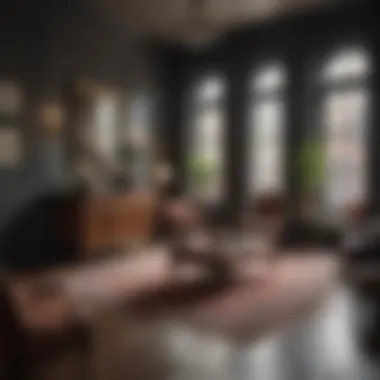

Over the years, many of these homes have withstood economic downturns and social changes, marking them as resilient structures in a constantly evolving city.
Architectural Styles
Brownstones exhibit a medley of architectural styles, primarily influenced by the periods during which they were built. Common styles include:
- Italianate: When many brownstones were constructed in the mid-1800s, the Italianate style influenced their design with low-pitched roofs and wide, overhanging eaves.
- Romanesque Revival: A bit later, the Romanesque style brought heavier stonework and rounded arches, showing up prominently in various neighborhoods.
- Gothic Revival: In contrast, some featured detailed Gothic elements like pointed arches and ornate decorations.
Each brownstone comes with its own story, reflecting the architectural trends of its time while catering to the needs and preferences of its inhabitants.
Significant Neighborhoods for Brownstone Homes
When it comes to brownstone homes in New York City, the neighborhoods play a significant role in shaping their allure and market value. The neighborhoods not only embody the architectural heritage but also reflect the cultural dynamics of the city. Selecting a brownstone in the right neighborhood can transform the buying experience, resulting in a sound investment and a rich lifestyle. Each neighborhood has its peculiarities, offering potential homeowners a variety of options that cater to differing tastes and requirements.
Brooklyn Brownstones
Park Slope
Park Slope has carved out a reputation as a family-friendly enclave, characterized by tree-lined streets and a strong sense of community. This neighborhood boasts a remarkable selection of brownstone homes, some dating back to the late 19th century. The most striking feature is perhaps the beautifully preserved facades, which often showcase intricate details.
The abundance of parks, including the famous Prospect Park, adds to its attractiveness, providing residents with ample green space for leisure and recreation. Besides, the vibrant local scene, from artisanal eateries to boutique shops, makes it a popular choice for young families and professionals alike. However, its desirability comes with a price tag, as property values here tend to be on the higher side.
Fort Greene
Fort Greene embodies a blend of historic charm and modern vibrancy. This neighborhood is home to iconic brownstones with rich architectural history. Notably, Fort Greene Park serves as a community hub, facilitating events and public gatherings. It’s a melting pot of cultures, where you can see a dash of artistic flair in its streets, owing to multiple theaters and a consequence of its art-centric community.
Moreover, its accessibility to public transport and proximity to the Brooklyn Academy of Music service as an added draw for residents. One downside could be the gentrification pressure, which might change the neighborhood's character over time.
Bed-Stuy
Bedford-Stuyvesant, often affectionately called Bed-Stuy, stands out as a cultural beacon with a rich African-American history. The neighborhood is known for its eclectic mix of brownstones featuring both Renaissance and Victorian styles. The vibrant street art and community events create a lively atmosphere, adding to its appeal.
Bed-Stuy offers a more affordable alternative compared to some neighboring locales, which has drawn a new wave of homeowners. However, this has also raised concerns about maintaining the neighborhood's unique historical identity in the wake of rapid development. Homebuyers must navigate this balancing act of charm versus change.
Manhattan Brownstones
West Village
The West Village is often viewed as the epitome of quintessential New York City charm. The quaint cobblestone streets lead to an array of boutique shops and restaurants, enveloping potential homeowners in a warm, neighborly atmosphere. It features some of the city’s most striking brownstones, each telling its own story through richly designed architecture.
This neighborhood has an artistic legacy that includes famous writers and musicians. However, its high property prices reflect its desirability, making it a premium option for buyers. For those who prioritize location and character, the investment is often seen as worthwhile.
East Harlem
East Harlem, sometimes overshadowed by its more famous neighbors, is a hidden gem when it comes to brownstones. This neighborhood has a dynamic history and is experiencing a renaissance thanks to recent developments. The architecture here presents a different flavor, featuring less uniform styles that appeal to those seeking uniqueness.
The affordability in comparison to other Manhattan areas makes it an attractive option, especially for first-time buyers. However, like Fort Greene, the rapid change can be a concern, as old locales give way to newer developments at a brisk pace.
Upper West Side
The Upper West Side combines elegance with a welcoming vibe, characterized by its grand brownstones and reputable schools. The area is dotted with green spaces like Central Park, enhancing its family-oriented atmosphere. The architecture is distinct and often reflects a mix of historic elegance blended with modern updates, creating a desirable living environment.
Accessibility to cultural institutions like The American Museum of Natural History makes it particularly appealing. However, potential buyers should be prepared for a higher cost of living, which is reflective of the neighborhood's upper-scale standing in the market.
Queens and Beyond
Astoria
Astoria serves as a thriving hub known for its diversity and artsy flair. The brownstone homes here provide a sense of community with a different experience than its NYC counterparts. This neighborhood blends cultural heritage with modern living, represented through its lively dining scene and artistic projects.
Moreover, Astoria offers relatively affordable housing, drawing in young professionals and families. However, its growing popularity leads to an increase in rental prices, which might strain newcomers looking for affordability.
Sunnyside
Sunnyside has that quiet-town feel mixed with city convenience. It houses a variety of brownstones that give a friendly nod to the past. The proximity to major transport lines makes commuting a breeze, and the community bonds cultivated here are worth noting.


Despite its charm, some might find the limited nightlife and dining options compared to other neighborhoods a drawback. Still, for those desiring a peaceful neighborhood with good connections, Sunnyside offers its unique essence.
The Real Estate Market for Brownstones
The real estate market for brownstones represents a fascinating blend of history, architecture, and contemporary living. The charm of these homes, coupled with their prime locations throughout New York City, makes understanding this market essential for anyone considering buying a brownstone. Not only are brownstones rich in character, but they also embody a lifestyle that many aspire to attain.
Key Elements to Consider in the Market
Navigating the brownstone market requires an awareness of various factors: historical significance, current demand, and unique architectural features. Each brownstone tells a story of its own and brings along varying values depending on its location and condition.
Current Market Trends
In recent years, the demand for brownstone homes has surged. Urban living has seen a resurgence, especially in neighborhoods known for their historical richness and cultural identity.
- The Brooklyn market, particularly in areas like Park Slope and Fort Greene, remains robust. Buyers are drawn to the community feel, excellent schools, and proximity to parks.
- In Manhattan, brownstones in places like the West Village maintain their status as premium real estate, often commanding high prices that reflect their desirability.
"Brownstones are not just homes; they are a slice of New York's vibrant tapestry, with each brick adding to the city’s story."
Price Ranges and Valuation
Understanding the price point of brownstones can be complex yet rewarding. The prices fluctuate significantly based on location, size, and condition of the property.
- In Brooklyn, you might find prices ranging from $1.5 million to upwards of $4 million or more for well-maintained, larger units.
- In Manhattan, expect to pay even more, with some properties reaching above $10 million, especially in prime locations.
Valuation also hinges on unique features such as original woodwork, spacious layouts, and outdoor spaces, which can significantly influence the market value.
Investment Considerations
Investing in a brownstone can be both an attractive and daunting prospect. Here are a few points to think about:
- Long-Term Value: Brownstones tend to appreciate over time, making them a viable long-term investment.
- Renovation Potential: Many buyers purchase brownstones needing upgrades, which can increase resale value significantly if done thoughtfully.
- Rental Opportunities: Some owners choose to rent out parts of their brownstone, which can help offset mortgage payments or provide supplemental income.
While the market offers exciting potential, prospective buyers should be prepared for challenges, including renovation costs and ongoing maintenance responsibilities.
The Buying Process
Navigating the intricate realm of buying a brownstone in New York requires not only an appreciation for these unique homes but also an understanding of the various steps involved. The buying process is pivotal as it lays down the groundwork for securing not just a property, but a piece of the city’s soul. With the right approach, you can uncover the charm and value embedded in a brownstone that may be right for you.
Step-by-Step Guide
The journey of purchasing a brownstone can seem daunting; however, breaking it down into manageable steps makes it far more approachable:
- Determine Your Budget: Knowing what you can afford upfront sets the stage. Consider not only the purchase price but also property taxes, insurance, and potential renovation costs.
- Research Neighborhoods: Brownstones are dispersed across various neighborhoods, each bearing a distinct character. Look into areas like Park Slope and Harlem to find a community that echoes your lifestyle.
- Get Pre-Approved for a Mortgage: Before diving into showings, securing pre-approval allows for a clearer understanding of your financing potential. Lenders can provide you a realistic figure that aligns with your financial situation.
- Find a Realtor Who Understands Brownstones: Seeking out a professional who specializes in brownstone sales can provide invaluable insights and streamline the process.
- Start House Hunting: Attend open houses and schedule private showings. Pay attention to the property’s condition and its historical integrity.
- Make an Offer: When you find the right brownstone, collaborate with your realtor to formulate a competitive offer based on comparable sales and current market conditions.
- Negotiate Terms: Be prepared for a negotiation phase where both you and the seller may discuss price, closing dates, and contingencies.
- Conduct Inspections and Appraisals: Ensure the brownstone’s integrity by performing thorough inspections. You want to avoid any nasty surprises down the road.
- Close the Deal: If everything checks out, finalize your financing, sign the necessary paperwork, and turn those keys!
Choosing the Right Realtor
Selecting the right realtor is crucial in your brownstone buying adventure. A knowledgeable agent can be your ally in maneuvering through the specific challenges of this market. Look for a realtor with extensive experience in brownstone transactions, particularly in the neighborhood you're targeting. They should understand not only the local market trends but also the architectural nuances that come with these classic homes.
"Your realtor is your guide through the labyrinth of buying a home. Make sure they have the map!"
It's also advantageous to ensure that the agent does not only focus on sales numbers but genuinely connects with your vision for a home. They should be able to offer insights into potential renovations and the community dynamics of the neighborhood.
Financing Options
Financing a brownstone presents its own unique challenges and considerations. While traditional mortgages are an option, there are other avenues worth exploring:
- Conventional Loans: These are ideal for buyers with strong credit histories and sizable down payments.
- FHA Loans: If you're a first-time buyer, an FHA loan could lower your initial costs, allowing for a smaller down payment.
- Renovation Loans: Given that many brownstones might require updates or repairs, renovation loans can cover the purchase price plus the cost of improvements.
- Co-Op vs. Condo Financing: Some brownstones are converted into co-operatives or condominiums. Understanding the financing process for these arrangements is critical, as they often differ significantly from single-family homes.
In sum, understanding the available financing options can empower you to make the best decision for your future home while allowing room for any restorations needed.
The buying process is like a dance. Each step requires attention and rhythm to ensure that the final outcome aligns with your dreams of owning a stunning piece of New York’s architectural heritage.
Challenges of Owning a Brownstone
Owning a brownstone in New York City can be a dream come true for many, but it comes with its fair share of challenges. Understanding these obstacles is crucial for potential buyers, giving them a realistic picture of what to expect. It's not just about the charm of high ceilings and decorative fireplaces; there's much more beneath the surface that needs consideration. Navigating these challenges is imperative for those who wish to invest in such a unique piece of architecture.
Renovation Costs
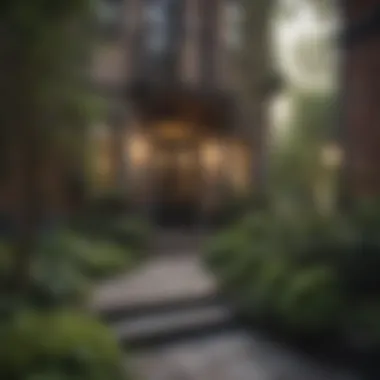
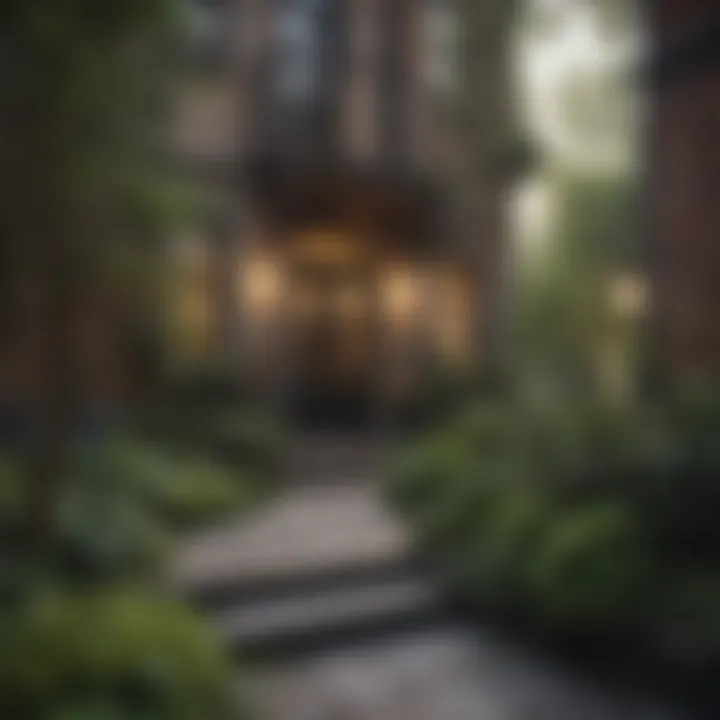
Renovating a brownstone can run up quite a bill, and being caught off guard with expenses is all too easy. These homes often need significant updates to maintain their historical integrity while also accommodating modern living standards. From plumbing and electrical work to structural repairs and aesthetic upgrades, the costs add up fast.
For example, if you find yourself needing to replace old windows or repair the roof after years of neglect, expect to shell out several thousand dollars, possibly more. It's not uncommon for buyers to budget for renovations only to exceed their estimates drastically, leading to financial strain down the line.
Moreover, navigating New York's building codes and obtaining the necessary permits can be as complex as threadling a needle in a haystack. It's crucial to conduct thorough inspections before making a purchase to gauge potential renovation needs.
Maintenance Responsibilities
Owning a brownstone is akin to having a pet; it's wonderful but requires diligent care and attention. The ongoing maintenance can be a burden if not planned for adequately. Homes that have stood the test of time come with the requirement of regular upkeep beyond the mere aesthetics.
From the brick façade vulnerabilities due to weather to the possibility of rodents sneaking in through tiny cracks, owners must stay proactive. Damage caused by aging infrastructure can also pose significant challenges. Thus, budgeting for annual maintenance becomes as important as budgeting for mortgage payments
Moreover, the shared walls with neighbors heighten the stakes. Sound insulation may not always be adequate, leading to disputes over noise. As such, fostering good relationships with your neighbors is key; after all, no one wants a "loudness war" in their cozy abode.
Neighborhood Dynamics
The neighborhood where the brownstone resides can shape your experience as much as the home itself. From the character of the community to the conveniences and amenities available, understanding neighborhood dynamics is paramount. Living in a historic district often means you are aligning yourself with certain expectations and interactions within that community.
For example, certain neighborhoods may be gentrifying, bringing a shift in demographics and culture. While this can be an opportunity for appreciation in property values, it might also cause friction with long-time residents feeling displaced. Additionally, crime rates and school district quality are variables that directly impact property values, community interactions, and overall satisfaction.
In essence, it's wise to engage with locals and research the area thoroughly. Chatting with current residents can unearth valuable insights that real estate listings alone might not reveal. Overall, while brownstones offer an appeal that’s hard to resist, it’s vital to keep your eyes wide open to their challenges as well.
"The beauty of a brownstone is often matched by its complexity in ownership."
In wrapping up this discussion on the challenges of owning a brownstone, potential buyers must weigh the charm against the responsibilities. Each challenge carries its lessons; by being well-informed, you're setting the stage for a more rewarding journey in owning one of these iconic homes.
The Cultural Impact of Brownstones
Brownstones are not just homes; they embody tales of New York’s past and present. The cultural impact of these iconic structures stretches beyond their brick faces and stately stoops. They serve as touchstones of identity, evoking a sense of place and community as well as rich history. Understanding this impact gives potential buyers a deeper appreciation of not just the property, but the life that flows within these walls.
Representations in Media and Art
Brownstones have been embraced by various forms of media and art. Movies and television shows featuring New York City often highlight these elegant structures. For instance, Friends, a beloved sitcom, was set in a brownstone located in Manhattan. This portrayal not only contributed to the allure of brownstones but also captivated audiences with the lifestyle of urban dwellers in these beautiful homes.
Literature also finds its muse in brownstone buildings. Writers from different eras, such as Edgar Allan Poe and more modern authors, have drawn inspiration from the unique architecture and urban landscape of New York, embedding brownstones in their narratives.
In visual arts, many painters have immortalized brownstones in their works, capturing the rich textures of these buildings and their iconic stoops. Artists like Childe Hassam have ventured to depict the urban scenery, showcasing the beauty and character of these homes. Their legacy is not just in their visual appearance, but in how they inspire creativity and expression through various artistic avenues.
Additionally, social media has become a platform for artists and photographers to share stunning images of brownstones, showcasing their unique details—from ornate doorways to classic window frames. These platforms have birthed a new appreciation among younger generations, merging modern culture with traditional urban heritage.
Symbolism in New York Culture
Most importantly, brownstones are steeped in symbolism. They represent stability in a city known for its turbulence and transformation. In many ways, these homes are a reflection of New Yorkers' resilience and determination to flourish amidst the chaos.
A brownstone often symbolizes opportunity—the chance for a family to carve out their niche in this sprawling metropolis. Many view these homes as markers of success, a tangible manifestation of one's journey through life in New York. The transition from renting apartments to owning a brownstone is seen as a significant milestone, highlighting personal growth and stability.
Moreover, brownstones foster community. Street block parties and social gatherings are common in neighborhoods filled with these unique homes. Owning a brownstone often means becoming part of a larger social fabric, where neighbors interact regularly and share common spaces.
“Brownstones are like the soul of New York, rich with stories and steeped in tradition.”
Culmination
Brownstone homes stand as more than mere architecture; they embody a significant slice of New York City's rich history. These timeless structures resonate with every corner of the metropolis, weaving together the past and the present in a way that deepens their appeal. As we bring this exploration to a close, it becomes evident that the future of brownstones is nuanced, colored by market demands, cultural shifts, and individual desires for homeownership.
Future of Brownstone Homes
The future of brownstone homes is looking up, quite literally. While specific styles or neighborhoods might ebb and flow with trends, the essence of a brownstone—charming facades, spacious interiors, and unique narratives—remains something many aspire for. In recent years, there’s been a marked resurgence in interest. This fascination, driven in part by a desire for more authentic living spaces amidst the sleek skyscrapers, prompts various renovations and restorations. People are not just purchasing brownstones; they are investing in their stories.
Moreover, neighborhoods once considered out of reach are witnessing a makeover, bringing areas like Astoria and even parts of the Bronx into the spotlight. Enhancement in public transport and local amenities only adds to their attractiveness, inviting homeowners to explore options previously overlooked. The increasing desire for city living coupled with the comforts of homely spaces like brownstones cleverly combines the best of both worlds. With sustainability in mind, many are also pushing for eco-friendly renovations. Thus, we see that the future of brownstone homes is intertwined with community evolution and personal aspirations.
Final Thoughts for Potential Buyers
For those eyeing a brownstone, the journey is just as vital as the destination. Start by understanding your motivations—whether it's the search for a family home, investment property, or simply the allure of city life. This clarity will guide your decisions amidst the myriad options.
Research is your best friend. Spend time familiarizing yourself with the neighborhoods, and don’t be shy in addressing your queries. There’s a depth to each neighborhood that can change your perspective; for instance, Park Slope, with its lush green spaces, offers a different rhythm than the vibrant pulse of Fort Greene.
Financing can be a maze, so consider all avenues. Look into various loan options, grants, and assistance programs that may be available to buyers in New York State. It’s also wise to consult professionals who are well-versed in real estate nuances, bringing years of experience to the table.
"Owning a piece of a brownstone can feel like entering a time capsule, where each room has stories to tell."
As you step into the world of brownstones, let enthusiasm guide you but balance it with prudence. These homes @are not just purchases; they symbolize a way of life that echoes the spirit of New York City. Embrace the unique opportunity to be part of the ever-evolving narrative of brownstone living.



